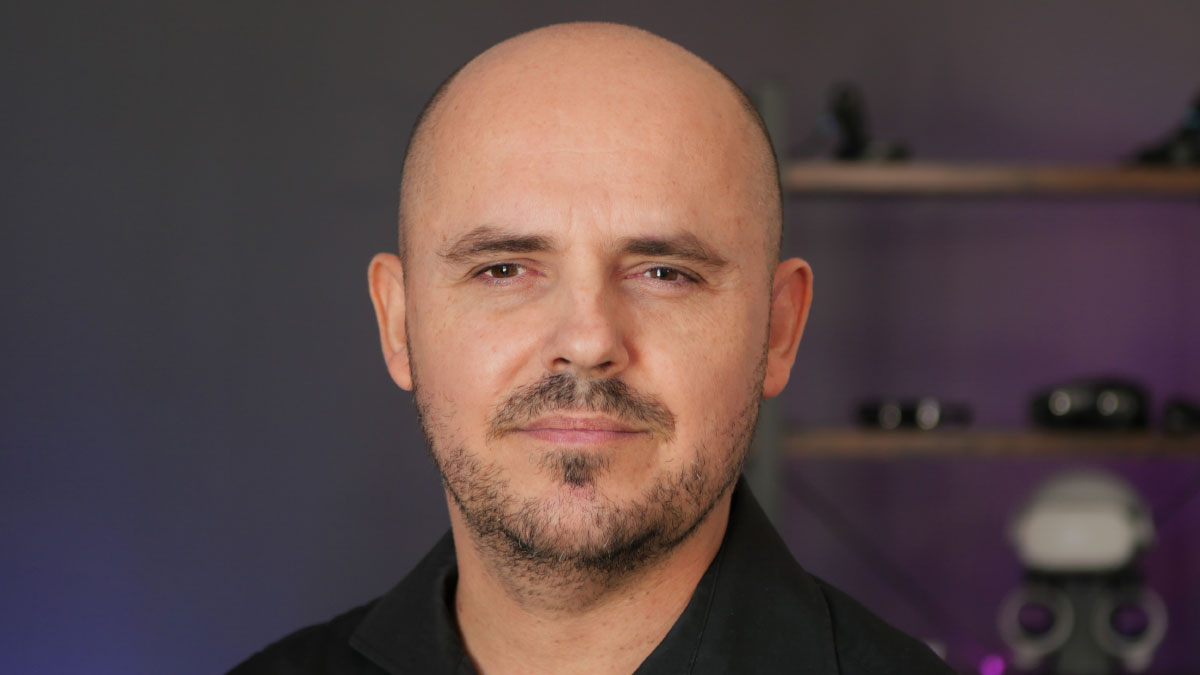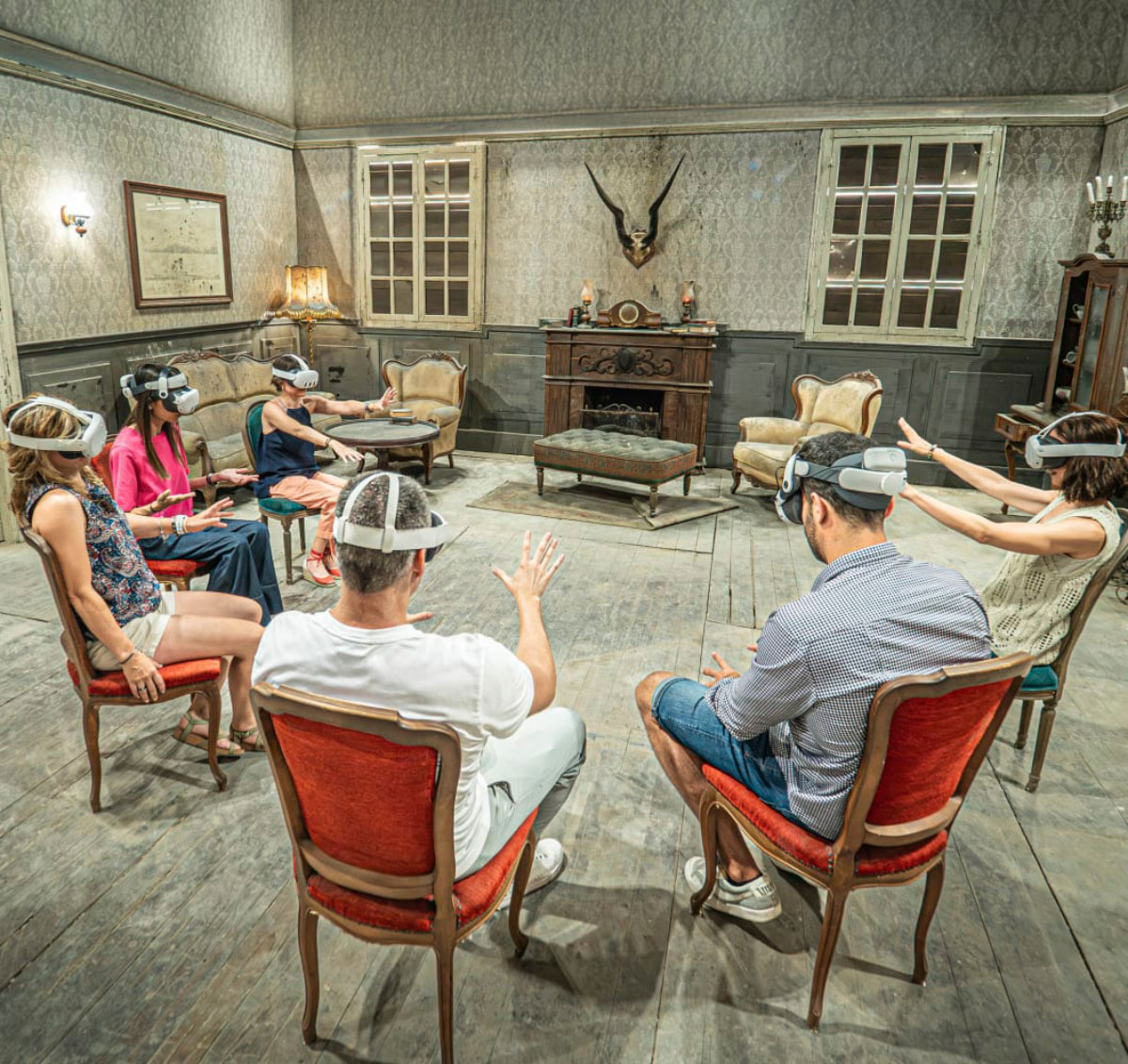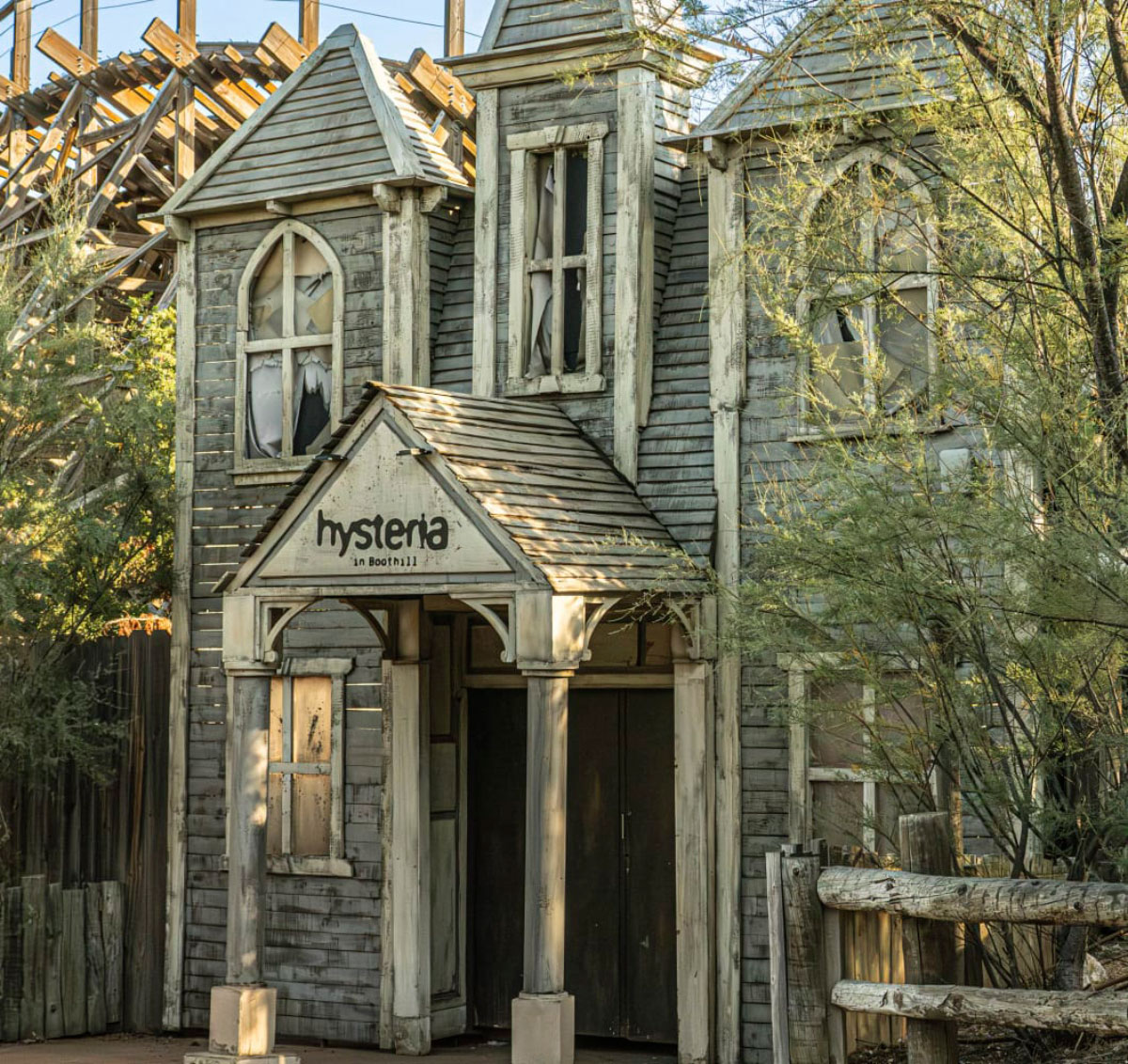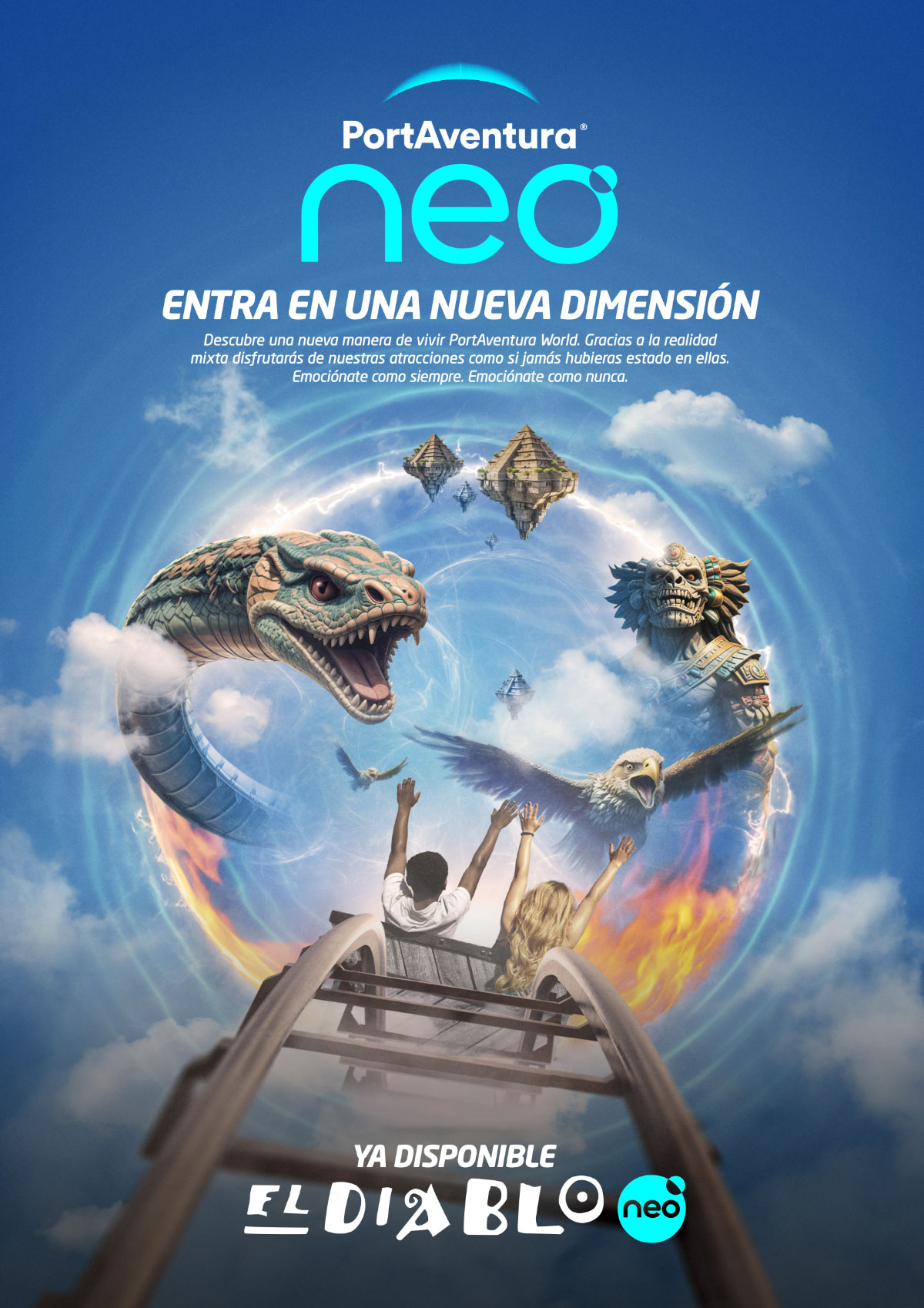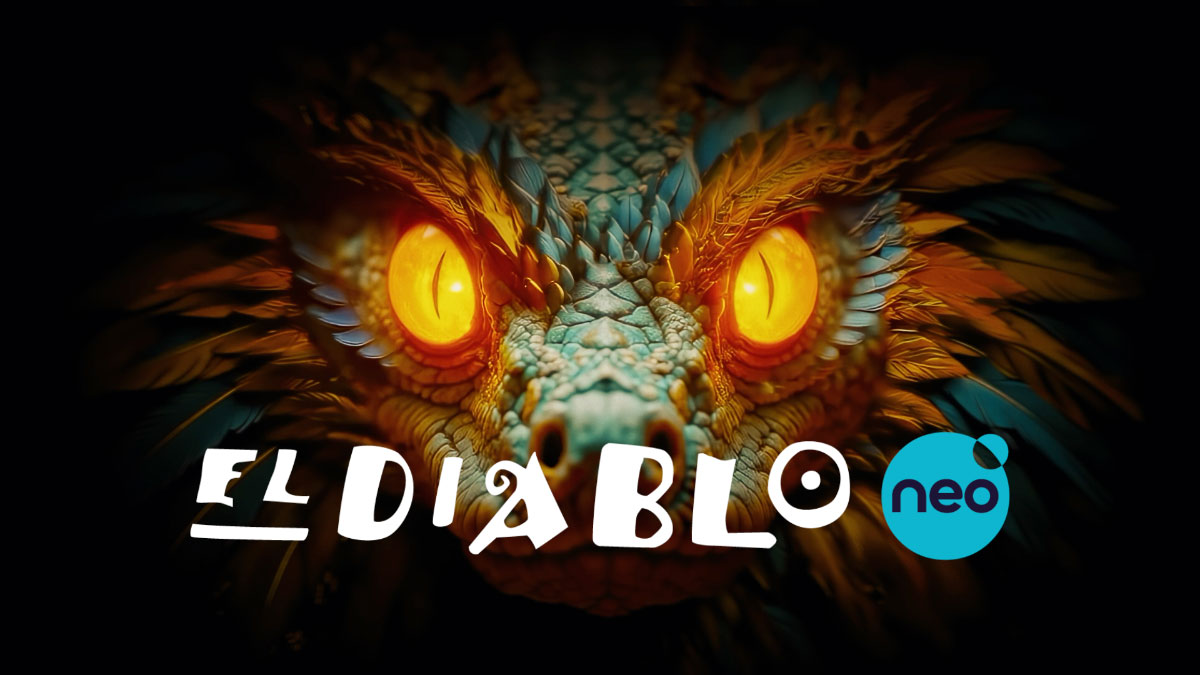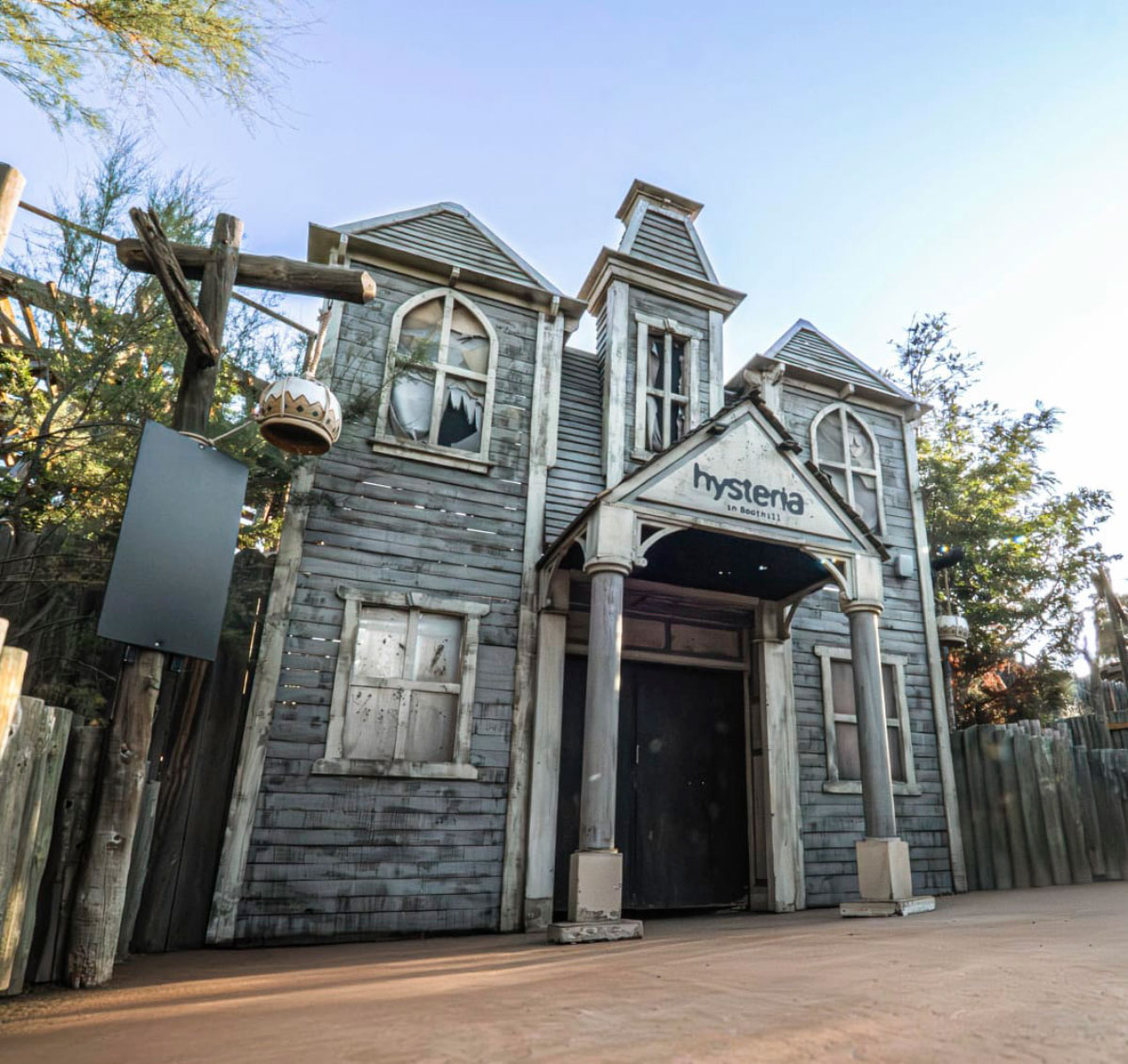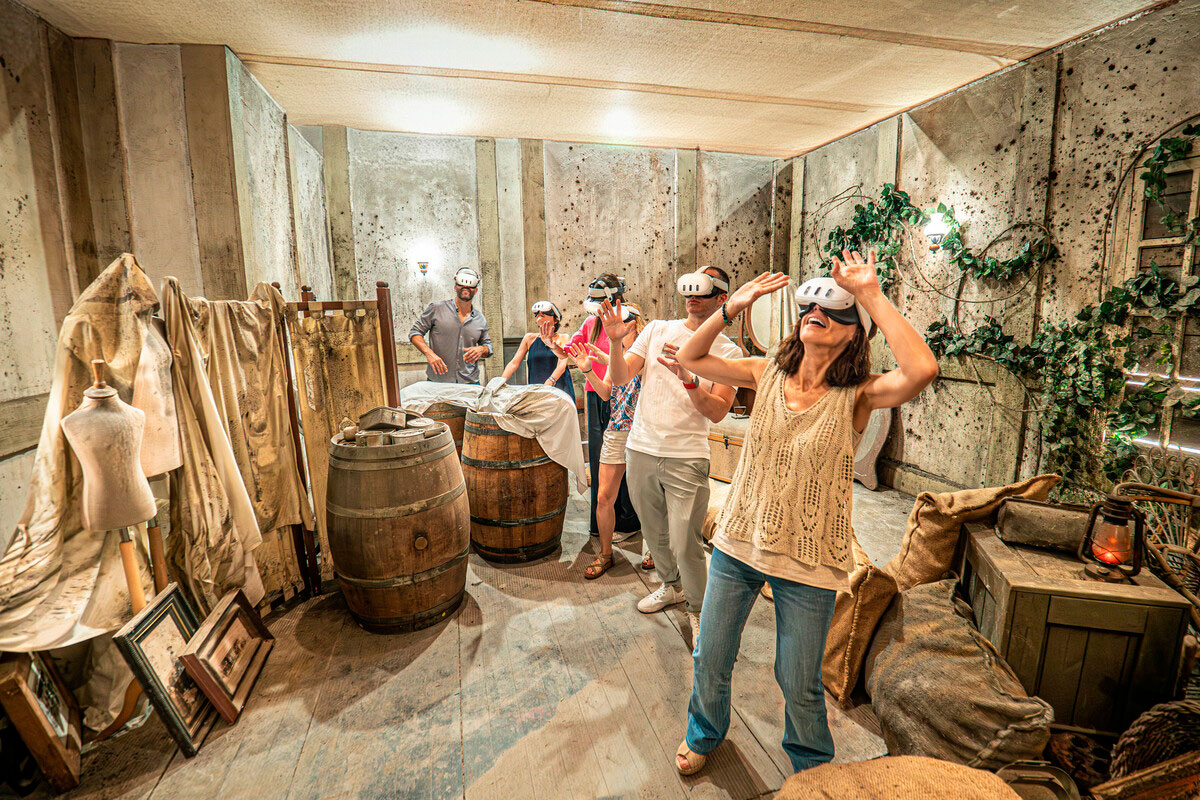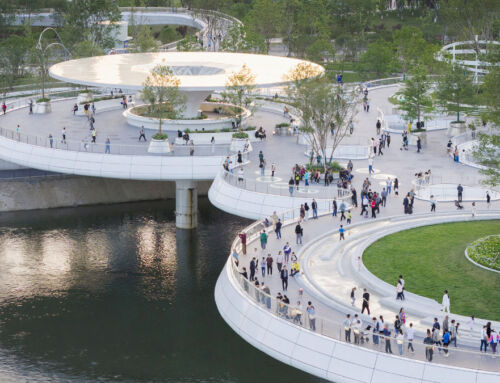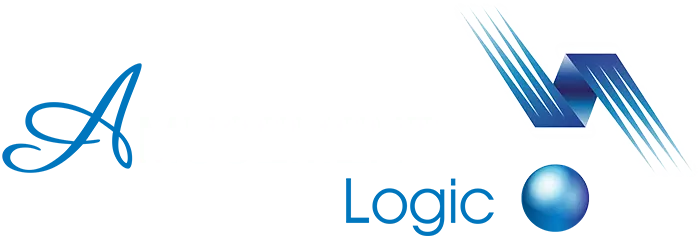This month we bring you one of those eye-opening visionaries, one of the creators behind PortAventura’s El Diablo Neo, the world’s first mixed reality roller coaster. For more than a decade, he devoted himself to the creation of immersive experiences, leading pioneering projects such as Hysteria in Boothill -also at PortAventura- and collaborating with giants such as Meta in the development of the metaverse. Read and discover the secret relationship between creativity, advanced technology and digital interaction. Before you, the future of mixed experiences and physical-virtual entertainment, which, by the way, is today.
Amusement Logic: You have just inaugurated El Diablo Neo at PortAventura, the world’s first roller coaster with mixed reality. What emotion prevails today: relief, pride or are you already thinking about the next goal?
Edgar Martín-Blas Méndez: We are very proud of the great teamwork we have carried out during these months with PortAventura, and of the success of the attraction; above all because of the feedback and the happy faces of the people when they try it. Many understand that it is something new and complex, which opens many doors to the future and they transmit this to the team.
The truth is that it has been a great creative and technical challenge; let’s think that mixed reality is very different from virtual reality (VR), which has been around since 2013. Classic virtual reality is from start to finish like an immersive video, with 3D effect and simulated movement; you always see virtual content in isolation through a screen.
Mixed reality, on the other hand, combines the real and the virtual world. To do this, we have to position virtual elements in a space of thousands of square metres (literally, the content is built on top of the park) and it has to look like everything is there, that it is almost physical and coexists with the real world, like another theming. The advantage is that, being virtual, we can build huge worlds, without limit.
In El Diablo Neo we have created giant beings that guard a parallel world inside a mine in Mexico. It is a world full of architecture such as pyramids, giant heads and lost temples; someone knocked down the wrong wall in the mine and opened a portal to that world, which now invades PortAventura.
A.L.: After the success of your first attraction in PortAventura, Hysteria in Boothill, what key adjustments did you apply to El Diablo Neo? How do you measure the impact on user experience?
E.M.M.: Hysteria in Boothill was our first attraction in PortAventura, of which we are very proud, for being a pioneer in mixed reality on a human scale (more than 200 m2 of multi-room and multi-user experience). In it, you walk through an old (real) house and the virtual horror elements are mixed with the theming.
This experience gave us the technical and creative push for PortAventura to call us back to make El Diablo Neo. Being a rollercoaster of just 3 minutes, the narrative is simpler, focusing on spectacularity, large scale and vertiginous effects.
In terms of user experience, we must consider that there are generations that are very accustomed to digital; this combination of the best of the real and virtual worlds is their native environment. In these attractions, the user is simply taken by surprise, by the unknown, there are no limits to the imagination, as there are none in the digital world they already know.
A.L.: Diablo Neo required 10 years and 260 previous projects. What was the biggest technical hurdle and how did you solve it?
E.M.M.: This might be one of the most complex projects we have done in over 10 years, especially to create that 1:1 scale virtual layer on top of the real world. Imagine it as a kind of large-scale virtual model literally anchored to the rollercoaster ride, with persistence, but without requiring any physical performance to make it possible, just virtual glasses.
The formula is secret, as it has a lot of its own code and is created for PortAventura; there was no precedent in mixed reality or spatial computing beyond walking around rooms, as we did in Hysteria, or as seen in the room-scale mixed reality applications at Meta or Apple. This goes way beyond that and it took a lot of effort on the part of the team, and a lot of testing on the attraction itself, until we got it right.
A.L.: You mention the use of artificial intelligence (AI) for mathematical calculations and design. Could you give a concrete example of how it accelerated the process? How far can AI go in creating immersive experiences?
E.M.M.: AI helped us a lot with the mathematics and also with the creative process. To be able to iterate so quickly with concepts and ideas is tremendous; before you could take years to develop something; now we’re talking about a few months; it’s definitely a step forward in agility. Of course, the whole project, beyond the help of AI to conceptualise sketches or calculate things, was done by hand; the modelling and texturing as well as the programming, we did that ourselves and we enjoyed the process.
A.L.: You say that Neo is the future of entertainment. Why do you think that mixed reality is the key to attracting the general public, as opposed to virtual reality? Will we one day see 100% “physical-virtual” theme parks?
E.M.M.: It’s a layer that adds a new form of experience and fantasy over the real thing, through glasses that will be lighter and lighter, until they become like simple sunglasses (Meta ORION will be launched soon and already brings that concept), which opens up a thousand possibilities. People’s faces, that smile when they finish in the mixed world, is what moves us. They seem to say “I’ve never experienced this before”, and you see in their faces the child in all of us.
One theme park I really like is Efteling. It is full of animatronics that are very well made but limited in movement and difficult to maintain. In a few years you will be able to go to a forest in Efteling and live in a fairy tale, accompanied by flying fairies, almost real for you and the group you go with, who unveil a whole narrative on a forest scale, impossible to imagine physically both for budget and technical limitations.
It is also very important that mixed reality does not make you dizzy. We insist a lot on this. By having a visualisation of the real world all the time, the user always knows where they are and the brain assimilates it better than virtual reality. Virtual reality, on the other hand, can sometimes generate uncomfortable sensations of displacement. On the other hand, the user, who still sees the real world in mixed reality, is in control of the situation and also shares the experience with friends.
A.L.: What prompted you to create Spatial Voyagers, which produces “physical-virtual experiences”, and Virtual Voyagers, with which you work on “Metaverse projects for big brands”? Was there a key moment that made you say: “this is my thing”?
E.M.M.: When we tested Meta Quest 3 almost 2 years ago, the first glasses that mixed the real and the virtual with good quality, we tested a whale and a pirate appearing out of a wall. The effect was incredible. The element we put on top of the real world seemed almost physical. That’s when we started to create Spatial Voyagers as a unit focused on this combination of real and virtual worlds.
Virtual Voyagers is our unit focused on classic VR, 360º video and Metaverse projects. Honestly, after many years and projects, I see much more progress in mixed reality than in VR. For a few years now, VR has hardly had any new developments, beyond more power or better screens. In fact, 80% of our turnover has been coming from mixed reality for a few years now. The change in trend is noticeable.
A.L.: In 2021, your company collaborated in the construction of the Facebook metaverse (Meta). How did this opportunity arise, what role did your team play and what did you learn from this project?
E.M.M.: We did this project for META together with a company from Los Angeles that had already collaborated on 360º concert shoots before. It consisted of a platform to create concerts in the Metaverse, from scratch; you dragged any 3D object, spotlights, effects or virtual actors recorded live onto the stage and they appeared in real time within META’s virtual world. In addition, the lighting technician controlled everything that happened live with a physical mixing desk. It was a real feat we did in the middle of the pandemic. We completed the project in just 4 months and it was premiered in the United States by groups like Major Lazer, Steve Aoki and Jaden Smith. I still remember the first meeting with Meta to see the demo; we passed them an invitation to a concert and that’s where we met.
From this project we learned that our thing is agility, innovating quickly so as not to get into eternal loops of iteration or vertical decisions; you launch, adjust, launch, adjust. When you think about a project too much, sometimes you miss the right moment; this one came out at the right time, when people couldn’t go to concerts because of the pandemic; in just a few months everything was reconfigured.
A.L.: Which sector do you think will be the next to massively adopt these technologies, health, education, leisure, tourism, commerce…? Why?
E.M.M.: The next sector is clearly museums and tourism; in fact, we have already received some reports along these lines. There is a lot of physical heritage in the world that has been repeating the same experience for decades (classic visits with guides or video screens). Mixed reality, being non-intrusive and not physically affecting anything in the real world, is easily applicable and exploitable.
For example, imagine visiting a temple in Egypt and experiencing a ceremony with the pharaohs of the 15th dynasty, in which you and your family are key players in the action; while another user lives an Indiana Jones-like experience with puzzles and tests. The possibilities are endless; the world is the best canvas there is.
A.L.: What mistake would you say someone who wants to get into immersive technologies should avoid at all costs?
E.M.M.: Above all, you must avoid motion sickness; well-made experiences do not produce motion sickness, and the virtual or mixed glasses of the last few years are prepared with refresh rates that avoid it. If you design an experience with too many elements, or digital effects that exceed the computation of the glasses, the frames per second drop and the user gets dizzy; and they will be dizzy all day long. We always analyse the processing load of the glasses for our designs, which should never be less than the stipulated frames. This way, users will always see everything smoothly and naturally, without motion sickness.
In short, it is necessary to take great care in the creative and technical process so that the experience is within the possibilities offered by the small chips in the mixed visors; so that it is incredible and elevates the physical to something never seen before. Now is the time.


